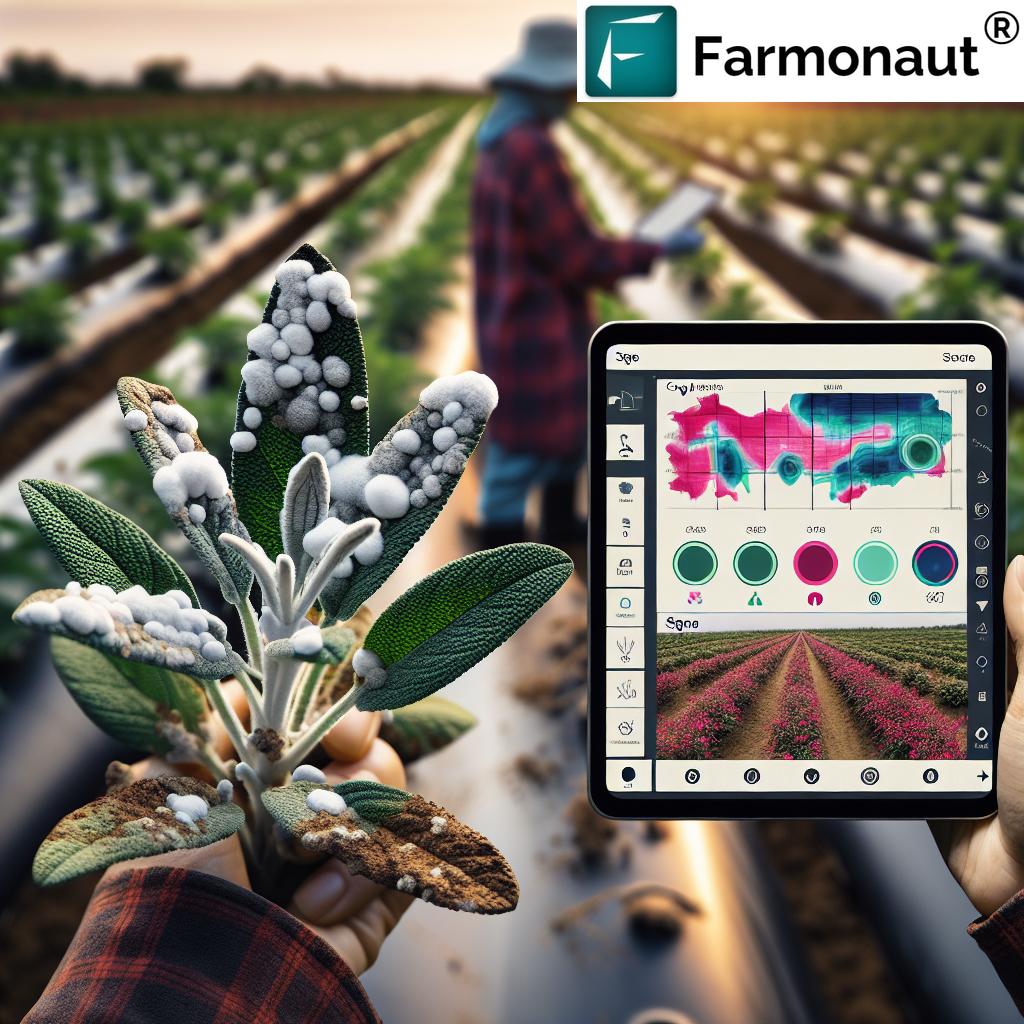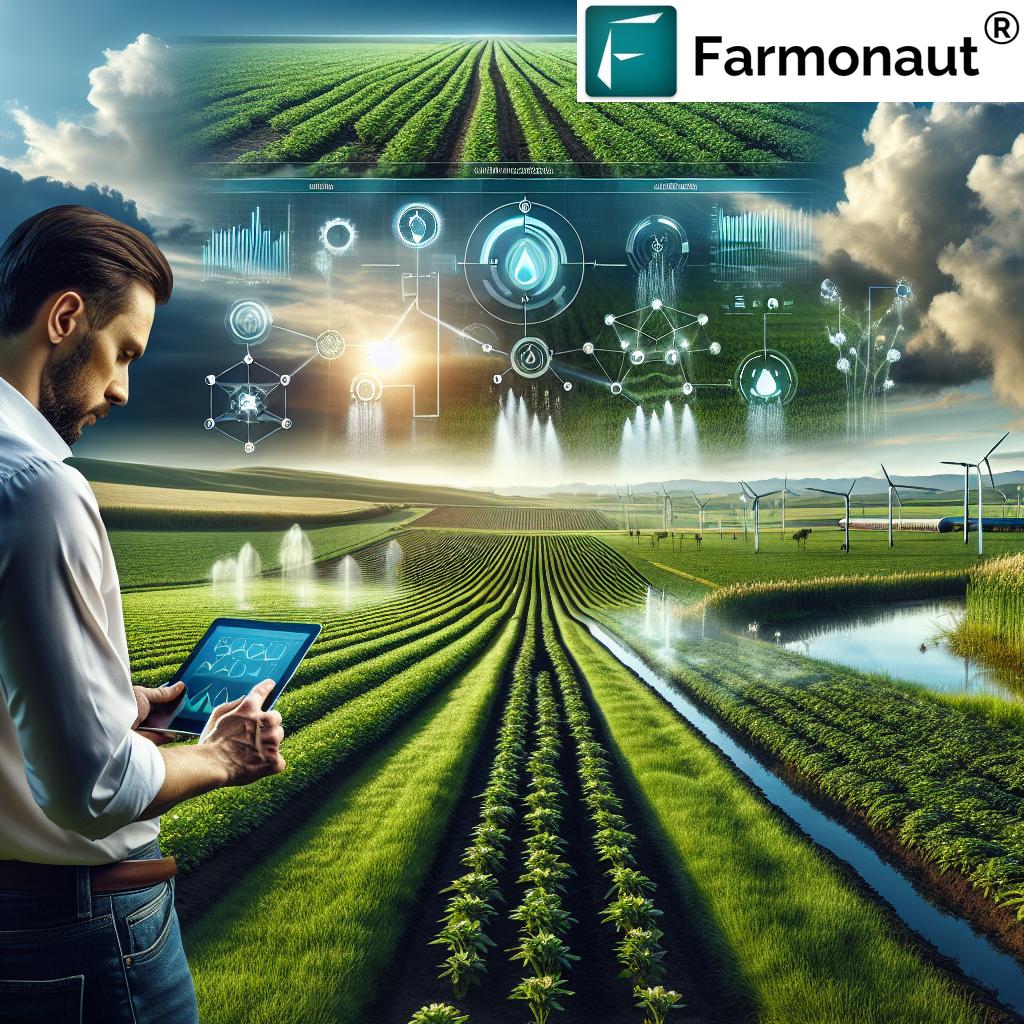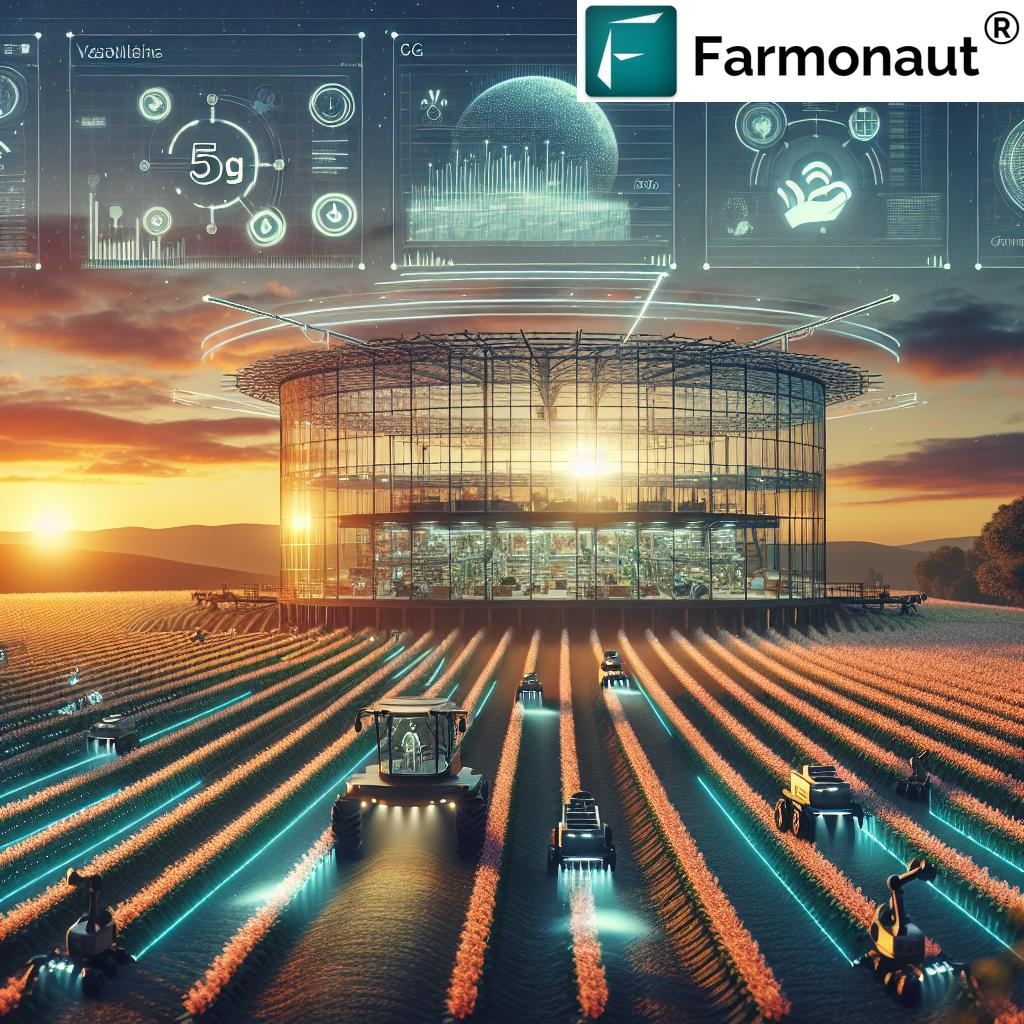- Introduction
- Agriculture Automation Control System Market: A 2025 Overview
- Understanding Agriculture Automation Control Systems
- Market Trends & Growth Drivers in 2025
- Key Applications of Automation in Agriculture
- Farmonaut’s Role in Agriculture Automation Control System Market
- Projected Growth of Key Agriculture Automation Technologies (2022–2025)
- Featured Videos: Automation in Agriculture by 2025
- Challenges & The Future Outlook
- Frequently Asked Questions
- Farmonaut Subscription Plans
- Conclusion
“The agriculture automation control system market is projected to reach $4.2 billion globally by 2025.”
Agriculture Automation Control System Market Growth 2025
The Agriculture Automation Control System Market in 2025: Transforming Farming for a Sustainable Future
The agriculture automation control system market is undergoing a profound transformation, driven by the urgent need to boost productivity, enhance sustainability, and address the multifaceted challenges of labor shortages and volatile global climate. As we approach 2025, these advanced automation control systems are at the heart of an evolution that’s reshaping the way food is produced, managed, and delivered globally.
Innovations in sensors, AI-powered analytics, robotics, and satellite-driven insights are making a dramatic impact and setting the stage for sustainable, precision-driven, and highly efficient farming operations. This blog comprehensively explores the landscape, growth trends, and transformative technologies steering the agriculture automation and control system market into the future.
Agriculture Automation Control System Market: A 2025 Overview
As the agriculture automation control system market approaches 2025, it finds itself at a pivotal crossroads. The industry is not simply automating mechanized tasks; rather, it’s entering the age of intelligent integration—where real-time data, advanced analytics, resource management, and precision interventions converge to optimize crop yields and reduce resource waste.
The market is propelled by multiple drivers that include declining rural workforce, escalating labor costs, government policy support, and increasing pressure for sustainability and traceability in the global food system. Automation in agriculture market size is projected to reach new heights, with smart field solutions and digital tools at the forefront of this evolution.
“By 2025, over 60% of new farms are expected to adopt advanced automation control technologies.”
Understanding Agriculture Automation Control Systems
The automation of agriculture is no longer merely about mechanization—it has evolved into a web of intelligent control mechanisms that orchestrate the autonomous or semi-autonomous operation of equipment, hardware-software systems, and processes spanning the entire field lifecycle.
What Are Agriculture Automation Control Systems?
Agriculture automation control systems integrate hardware and software to enable monitoring, data-driven management, and autonomous decision execution in activities like:
- Irrigation & water delivery management
- Automated fertilization
- Pest & disease detection
- Precision crop input usage (seeds, water, fertilizers, pesticides)
- Remote crop and soil monitoring
- Production scheduling, harvesting, and storage control
- Yield prediction and analytics
These systems employ an innovative combination of drones, sensors, AI-powered cameras, GPS, satellite imagery, robotics, and cloud-based analytics for real-time field monitoring and interventions. For example, automated irrigation systems use soil moisture sensors—often linked to weather data—to precisely adjust water delivery, optimizing water usage while maintaining plant health.
Key elements of these solutions include:
- Sensors: For soil nutrient and moisture monitoring, climate tracking, and disease/pest alerts
- AI & Analytics: To interpret vast amounts of field data and provide actionable insights
- Autonomous Vehicles & Robotics: For planting, weeding, spraying, and harvesting with minimal human input
- Integration Platforms: To centralize, analyze, and optimize the entire management process
Difference Between Mechanization & Automation in Agriculture
While mechanization focuses on easing manual labor with machines (e.g., tractors, harvesters), agri automation systems involve intelligent, networked mechanisms that allow equipment and processes to adapt autonomously based on field data. This shift from static operation to dynamically optimized management is what defines automation in agriculture market innovation for 2025 and beyond.
Market Trends & Growth Drivers in 2025: The Future of the Agriculture Automation and Control System Market
The agriculture automation and control system market in 2025 is projected to witness significant expansion, with the automation of agriculture expected to be a cornerstone of modern farming practices. Let’s look at the key drivers fueling this unprecedented growth:
- Labor Challenges and Efficiency Needs
With the declining rural workforce and escalating labor costs, automation becomes indispensable for farmers looking to maintain or expand productivity without proportional increases in manual labor. This is driving automation adoption in both developed and emerging markets. - Sustainability and Resource Optimization
The demand for sustainable agriculture and responsible resource management is spurring adoption of precision agri automation systems that reduce input waste (water, fertilizer, pesticides), improve yields, and minimize environmental impact. - Technological Advancements
Rapid breakthroughs in IoT sensors, AI-driven analytics, GPS-guided machinery, and cloud computing are making automation of agriculture more powerful, accessible, and scalable even for smallholder farmers. - Government Support & Incentives
Many nations are supporting smart farming with tech grants and favorable policies to promote automation adoption, R&D, and market integration. Such efforts are crucial for accelerating growth. - Traceability & Food Security Demands
Global consumers now seek traceability and food safety, making data-driven, automated agriculture systems more essential than ever. - Advent of AI, Edge Computing, and Connectivity
The ability to process and interpret massive real-time field data is powered by edge computing, AI, and better rural connectivity—further amplifying automation in agriculture market efficiency.
Result? Automation in agriculture is becoming central to global food production, reshaping the way food is produced, managed, and delivered on farms large and small.
A key opportunity for financial institutions and farmers is Farmonaut’s
satellite-based crop loan & insurance verification system, unlocking affordable credit and streamlined insurance with real-time field validation.
Key Applications of Automation in Agriculture: Unlocking Productivity & Sustainability
The agriculture automation control system market is marked by cutting-edge technologies and applications that deliver value at every stage of crop production. The core automation applications for 2025 include:
-
Precision Irrigation Control
Automated irrigation systems use real-time data from soil sensors, weather APIs, and satellite monitoring to adjust water delivery with pinpoint accuracy, optimizing water use while maximizing crop health -
Autonomous Machinery & Robotics
From driverless tractors and robotic planters to drones for aerial application, automation of agriculture is automating planting, weeding, spraying, and harvesting, reducing the dependence on manual labor. -
Remote Crop Monitoring & Disease Detection
Modern AI-powered cameras, sensors, and satellite platforms quickly identify plant stress, pest invasions, or nutrient deficiencies—allowing timely data-driven interventions. -
Cloud-Based Analytics for Decision-Making
Secure real-time data aggregation and predictive analytics are used to plan rotations, forecast yields, and optimize field input use—making every field more profitable and sustainable. -
Traceability & Compliance via Blockchain
Blockchain integration enables traceability in agri supply chains, helping to verify the provenance of crops, reduce fraud, and enhance consumer trust. -
Yield Mapping & Autonomous Field Mapping
Integration of drones, GPS, and machine learning for field mapping, yield prediction, and resource allocation is becoming standard for large- and small-scale operations.
How Advanced Control Systems Transform Field Operations
The most innovative agri automation systems are those that seamlessly integrate data, monitoring, control, and execution to maximize field efficiency and minimize waste. For instance, autonomous irrigation networks not only deliver water based on current soil moisture, but can also shift schedules in response to real-time weather patterns—saving significant resources and costs.
With advanced robotics and drone technologies, farmers can now manage larger areas with fewer workers—addressing both labor shortages and efficiency needs.
The integration of satellite monitoring and AI-based advisory systems (such as those provided by Farmonaut) now empowers farmers and agricultural enterprises with:
- Actionable insights for resource management
- Remote diagnosis of crop health & field conditions
- Efficient allocation of fertilizers and irrigation
- Early detection of environmental risks and pest outbreaks
For businesses managing multiple farms or vast fields, our
Large Scale Farm Management platform
offers centralized satellite monitoring and AI-driven analytics to optimize operations, reduce costs, and improve yields.
Farmonaut’s Role in the Agriculture Automation Control System Market
As an advanced satellite technology company, Farmonaut is uniquely positioned to enhance the automation of agriculture. We leverage satellite imagery, AI, blockchain, and mobile/web applications to democratize access to actionable field insights for individual farmers, businesses, and government institutions alike.
How Farmonaut Solutions Drive Market Growth
Our full suite of offerings is designed to support the rapid growth of the agriculture automation control system market in 2025 and beyond:
- Satellite-Based Monitoring: Multi-spectral satellite images enable real-time, detailed assessments of crop health, soil conditions, and field anomalies—critical for automated interventions and precision agriculture.
- Jeevn AI Advisory: Our AI-based system delivers actionable field recommendations and weather forecasts, enhancing yield optimization and proactive management.
- Blockchain Traceability: By bringing full traceability to agricultural and supply chain operations, we help reduce fraud, build trust, and ensure compliance with growing global standards.
- Environmental Impact Monitoring: Our advanced monitoring tracks carbon usage and resource impact, aligning with sustainability goals. Discover more about our specialized Carbon Footprinting Service.
- Fleet and Resource Management: Automated vehicle and equipment tracking reduces costs, improves usage efficiency, and boosts productivity for agri-businesses of all sizes. Explore the value of Farmonaut’s Fleet Management Tools.
- Scalable Apps & API: Field operations can be managed remotely through Android, iOS, Web, or even via Farmonaut API, with full developer documentation at API Developer Docs.
By making high-quality automation solutions cost-effective and accessible, we help maximize productivity, minimize inputs, and drive sustainable agriculture forward in markets around the world.
Farmonaut’s Commitment to Affordability, Scalability, and Sustainability
- Affordability: By basing solutions on satellite tech, we eliminate the need for costly physical infrastructure.
- Scalability: Our modular platform enables seamless expansion from smallholder fields to nation-scale operations.
- Sustainability: Features like environmental impact monitoring support compliance and help create a more sustainable agriculture ecosystem.
- Transparency: Blockchain-based traceability instills trust in agriculture supply chains.
Learn more about how Farmonaut Product Traceability can protect your brand and supply chain.
Benefits Realized with Advanced Automation & Monitoring
- Increased Productivity: Automation of repetitive field management allows round-the-clock coverage, improving yields and efficiency.
- Cost Reduction: Data-driven decisions and targeted interventions reduce input and labor costs as well as losses from pests or weather events.
- Environmental Stewardship: Precision delivers lower chemical runoff and water overuse, safeguarding the environment.
- Enhanced Food Security: Reliable, automated field management ensures stable supply to meet rising population demands globally.
Additionally, Farmonaut’s services such as automated alternate wet and dry (AWD) phase detection help optimize irrigation, conserve water, and reduce costs on a large scale.
Projected Growth of Key Agriculture Automation Technologies (2022–2025)
The table below summarizes the estimated expansion and primary benefits of critical agricultural automation technologies between 2022 and 2025, underscoring the market’s rapid evolution.
| Technology Type | 2022 Market Value (USD Billion) | 2025 Projected Value (USD Billion) | CAGR (%) (Est.) | Primary Benefits |
|---|---|---|---|---|
| Precision Irrigation | 0.86 | 1.72 | 25.3 | Water use efficiency, fertilizer savings |
| Drones & Remote Sensing | 0.65 | 1.58 | 34.6 | Crop health monitoring, early warnings |
| Autonomous Tractors | 1.02 | 1.98 | 20.5 | Reduced labor, higher precision, productivity |
| Smart Greenhouses | 0.53 | 1.22 | 32.4 | Automated climate & nutrient management |
| AI-Based Analytics Platforms | 0.40 | 1.10 | 41.7 | Yield prediction, decision support, sustainability |
Featured Videos: Automation in Agriculture by 2025
- Smart Farming Future : Precision Tech & AI: Boosting Harvests, Enhancing Sustainability
- Smart Farming Future: Precision Tech & AI Boosting Harvests, Enhancing Sustainability
- Farmonaut Large Scale Field Mapping & Satellite Based Farm Monitoring | How To Get Started
Challenges & The Future Outlook for the Agriculture Automation Control System Market
Key Challenges Facing Automation in Agriculture Market Growth
- High Initial Investments: Advanced systems require upfront capital outlay, which can be prohibitive for smallholders without external support.
- Technical Expertise Gaps: Many farmers need training in digital tools, sensor maintenance, and analytics interpretation.
- Connectivity in Rural Areas: Limited network infrastructure can hinder real-time monitoring and cloud data integration.
- Standardization, Interoperability & Data Privacy: Integrating diverse hardware/software and protecting farm data are emerging industry-wide challenges.
Despite these hurdles, the future outlook is highly positive. As automation technologies mature, costs decrease and support programs expand, adoption is expected to increase across regions and farm sizes. AI, blockchain, and edge computing will only deepen system intelligence and autonomy, further accelerating sector-wide transformation.
Moreover, a new emphasis on sustainable, traceable, and climate-resilient agriculture will continue to drive demand for the automation in agriculture market.
Growers looking for the latest advisory on crop health and forest management can check our Crop, Plantation & Forest Advisory platform for bespoke AI-driven recommendations and monitoring.
“By 2025, over 60% of new farms are expected to adopt advanced automation control technologies.”
Frequently Asked Questions (FAQ)
The agriculture automation control system market refers to the entire ecosystem of hardware, software, sensors, analytics, and autonomous mechanisms that enable automated monitoring, management, and intervention in farming operations.
How does automation benefit modern agriculture in 2025?
Automation enhances field efficiency, increases productivity, optimizes resource usage, reduces costs, supports sustainability, and boosts food security by enabling precise, data-driven decision-making and scalable operations.
What are the key technologies driving automation in agriculture?
Key technologies include: AI-powered analytics, multispectral satellite imagery, IoT sensors, advanced robotics, drones, blockchain traceability, edge computing, and cloud-based management systems.
Are these systems accessible and affordable for small-scale farmers?
With platforms like Farmonaut, satellite-driven automation solutions have become increasingly affordable, scalable, and accessible via mobile, web, and API—helping smallholders benefit from advanced automation with minimal upfront costs.
What challenges still need to be addressed for full-scale automation adoption?
Initial investment, technical training, rural connectivity, data privacy, and system interoperability are key issues; however, ongoing innovation and supportive policies are closing these gaps.
How is environmental sustainability supported by automation of agriculture?
Automated and precision-driven operations reduce overuse of water, fertilizer, and chemicals, minimize carbon footprint, and enable effective monitoring of environmental impact, supporting goals of sustainable agriculture.
Can field operations be managed remotely?
Yes, tools like Farmonaut allow remote field monitoring, management, and resource allocation via the web, mobile apps, or APIs, making modern farming more accessible and data-driven.
How do traceability and blockchain play a role in agriculture automation?
Blockchain integration ensures end-to-end traceability, transparency, and security in agricultural supply chains—meeting growing global requirements for food authenticity and safety.
Farmonaut Subscription Plans
Ready to bring your farm, agribusiness, or government operations into the data-driven future of agriculture automation and control?
Conclusion: Automation in Agriculture—The Cornerstone of Efficient, Sustainable, and Scalable Farming in 2025
The agriculture automation control system market is rapidly evolving—serving as a cornerstone for the future of farming by integrating advanced sensors, AI, robotics, and real-time analytics. These technologies enable farmers, agribusinesses, and governments to meet the challenges of feeding a growing global population, achieving sustainability targets, and optimizing costs and yields.
By 2025, we anticipate automation will not just be an advantage—it will be a necessity. Platforms like Farmonaut will continue to make advanced, automated insights accessible to all, supporting intelligent management, traceability, and resource optimization. As automation adoption expands and market participants embrace digital transformation, the results will be unprecedented efficiency, sustainable practices, and increased food security on a global scale.
If you are ready to join the forefront of the agriculture automation and control system market, now is the best time to try Farmonaut’s platform for the future of smart, sustainable farming.
The future of agriculture is autonomous, intelligent, and data-driven—make sure your operations are too.














